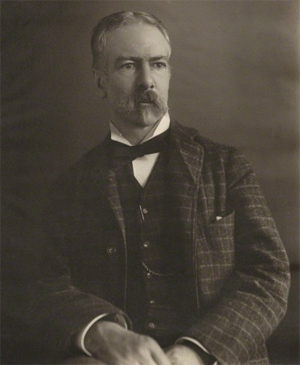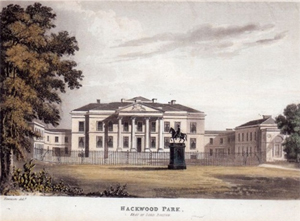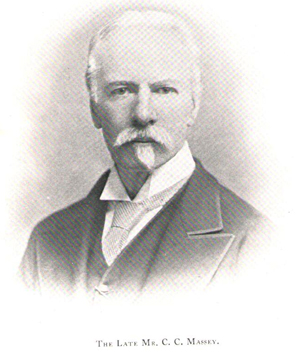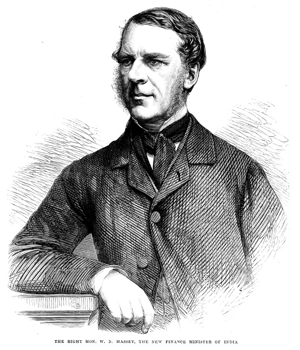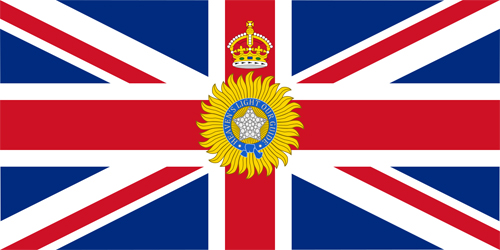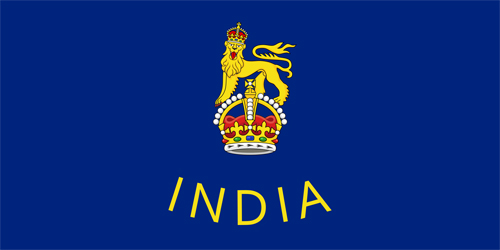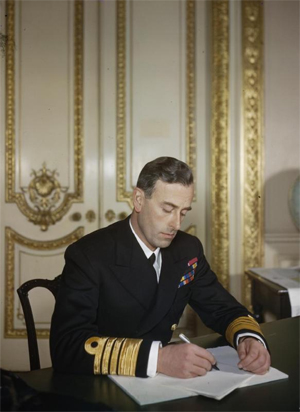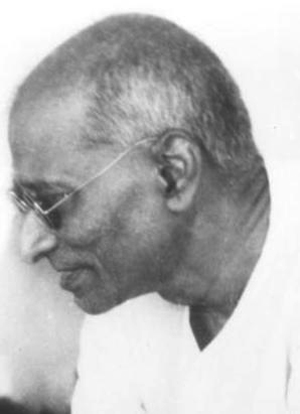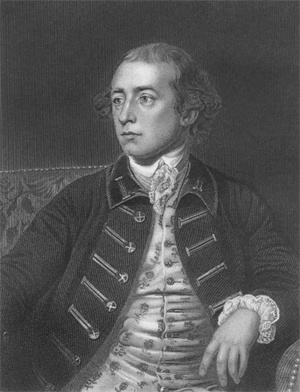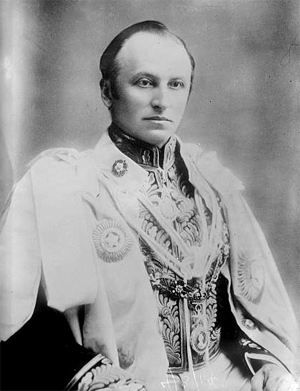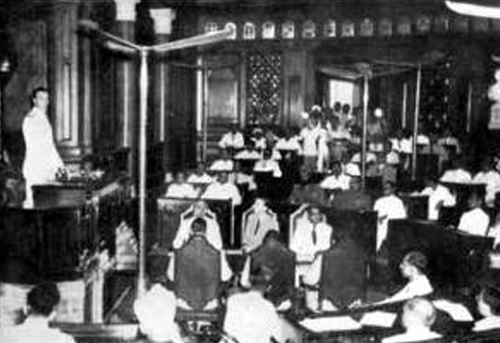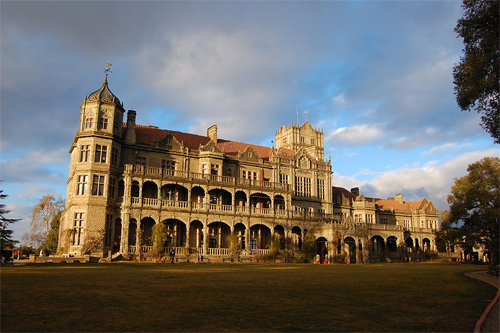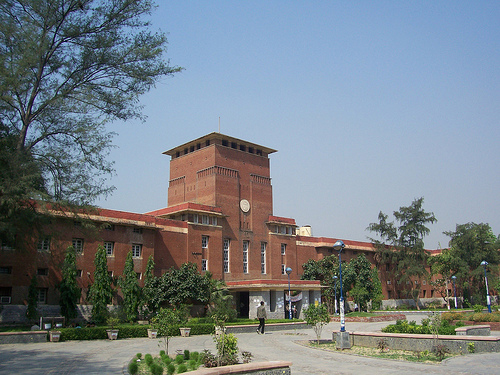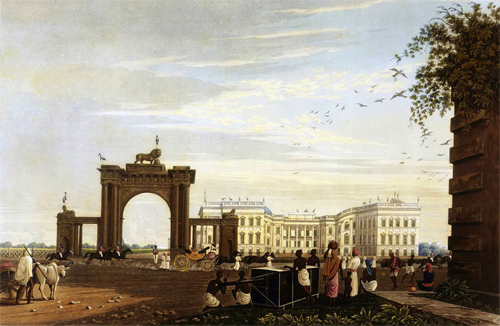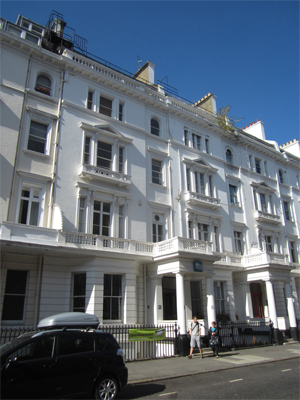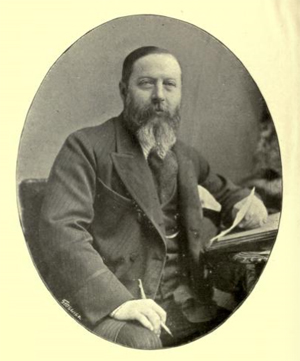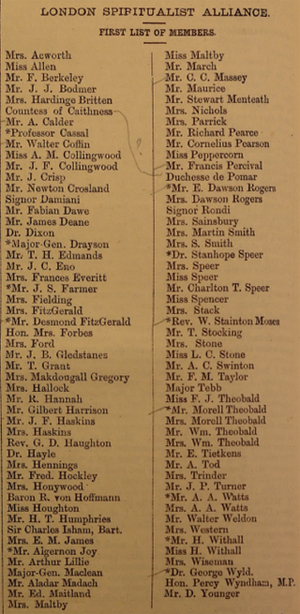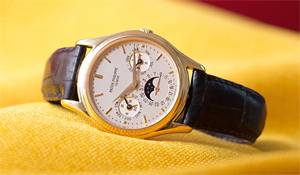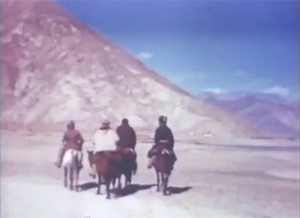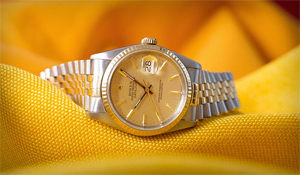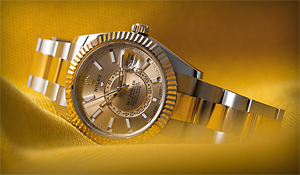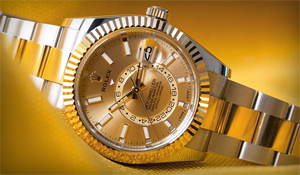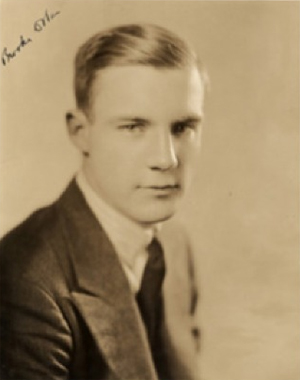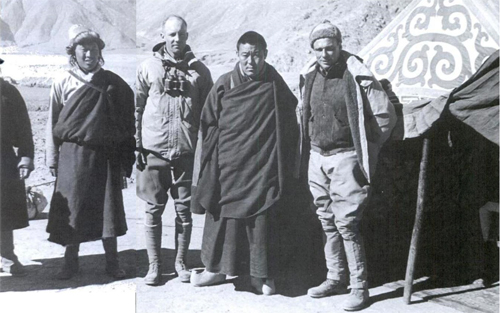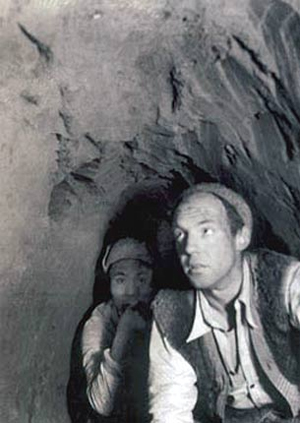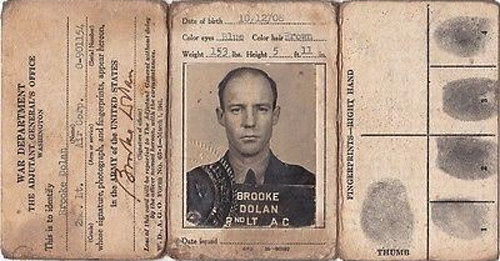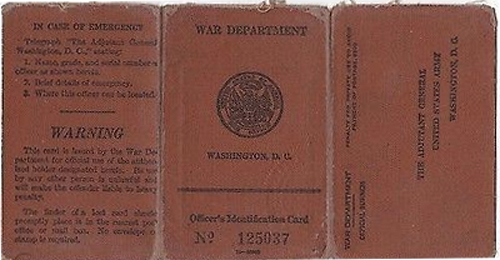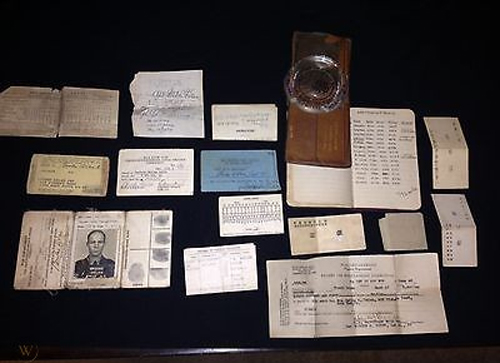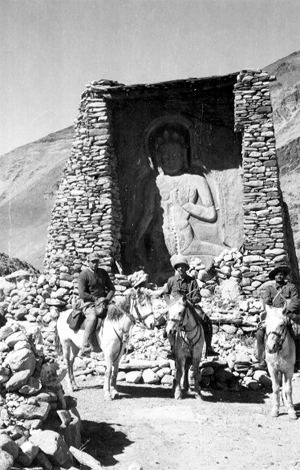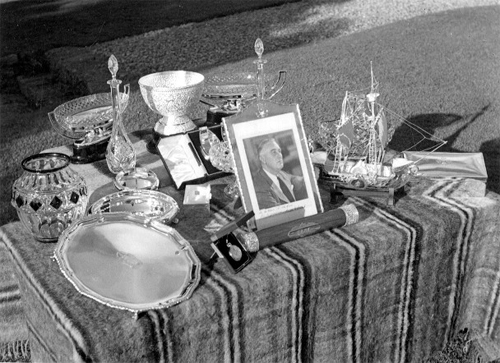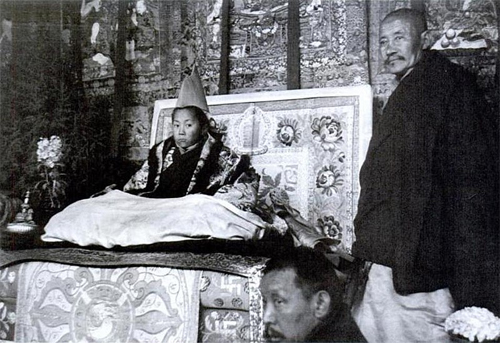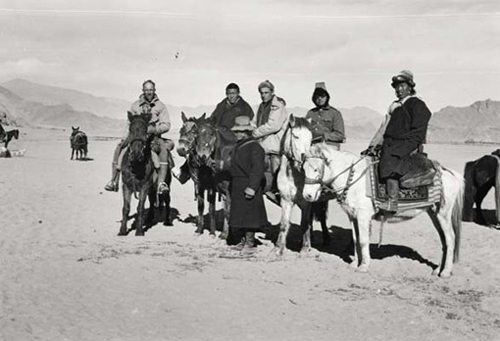A Short History of The British Psychological Society [Cox's Psychological Society]by Dr G.C. Bunn, B.P.S. Research Fellow at the Science Museum. The text has been adapted from the author’s Introduction to G.C. Bunn, A.D. Lovie and G. D. Richards (eds) Psychology in Britain: Historical Essays and Personal Reflections. Leicester: BPS Books, 2001.
1901Psychology was a modest enterprise in Britain in 1901. Laboratories for experimental research had been established in London and Cambridge, and elementary psychophysiology was being taught at Liverpool. A lectureship in comparative psychology had been created at Aberdeen and Oxford had appointed a reader in Mental Philosophy.1 An informal psychology discussion group had been formed at University College London. It was here, on October 24 1901, that a Psychological Society was founded. The aim of the Society, its members quickly decided, was ‘to advance scientific psychological research, & to further the co-operation of investigators in the various branches of Psychology.’ The ten founders resolved ‘that only those who are recognised teachers in some branch of psychology or who have published work of recognisable value be eligible as members’.2
Although a variety of attempts had been made to institutionalise the subject during the previous quarter century, the ‘new psychology’ nevertheless remained the activity of but a few specialists.3 Alexander Bain had first broached the idea of bringing out a new philosophical journal in 1874. The principal aim of the new venture, editor George Croom Robertson declared in the first issue of Mind: A Quarterly Review of Psychology and Philosophy, was to ‘procure a decision of this question as to the scientific standing of psychology’ (Neary, 2001).
The first attempts at creating a formal institutional setting for psychology were made by Edward Cox in 1875, who established the Psychological Society of Great Britain to investigate the workings of ‘psychic force’ (Richards, 2001). In 1877, James Ward unsuccessfully lobbied the Cambridge University Senate to establish a psychophysical laboratory. Fourteen years later he was given a small grant for apparatus (Hearnshaw, 1964: 171-2).
Shortly after the P.S.G.B’s demise in 1879, some of its members formed the Society for Psychical Research to gather information on telepathy, hypnotism, hauntings and hallucinations (Hearnshaw, 1964: 158). A year after publishing his Inquiries into Human Faculty (1883), Francis Galton set up an Anthropometric Laboratory at the International Health Exhibition in London which continued at the South Kensington Museum until 1891 (Hearnshaw, 1964: 59). Galton’s laboratory provided James McKeen Cattell with a base for applying methods he had learned as a student in Germany to anthropometric testing. Having brought experimental apparatus from Leipzig, Wilhelm Wundt’s American research assistant was also able to run an unofficial and short-lived psychological laboratory at Cambridge between 1887 and 1888 (Sokal, 1972).4
In 1897, W.H.R. Rivers established a psychological laboratory at Cambridge in a room donated by the Physiology Department (Slobodin, 1978/1997: 16). That same year, Henry Wilde, a successful electrical engineer, offered the capital to Oxford University to endow a Readership in Mental Philosophy. The holder was obliged to lecture ‘on the illusions and delusions which are incident to the human mind’ and ‘on the psychology of the lower races of mankind, as illustrated by the various fetish objects in the Anthropological Museum of the University’ (Oldfield, 1950: 346). George Stout, whose Manual of Psychology was to became the standard text book for generations of students, was appointed to the position. With assistance from Galton, James Sully opened an experimental psychology laboratory in early 1898 at University College London. Appointed to undertake the teaching of students, Rivers managed to obtain experimental apparatus from Hugo Münsterberg’s laboratory in Freiburg (Valentine, 1999).5 A Department of Experimental Psychology had also been set up in 1901 in connection with the Pathological Laboratory of the London County Council Asylums at Claybury.6
As the British Psychological Society’s first historian, Beatrice Edgell, later recalled, the most outstanding feature of British psychology at the turn of the century ‘was the development of experimental and of quantitative methods.’ Three British psychologists, Charles Myers, W.H.R. Rivers and William McDougall had employed the new techniques on the famous 1898 Cambridge anthropological expedition to the Torres Strait (Richards, 1998). Edgell had herself pioneered experimental psychology at Bedford College London on her return from Würzburg in 1901 (Valentine, 1997, forthcoming). ‘In Germany and in America psychology was already established as an independent science with laboratory courses. This country was awakening to the importance of this new development.’ (Edgell, 1947: 113). One indication of the enthusiasm was the creation, in 1904, of the British Journal of Psychology. James Ward and the ubiquitous Rivers were the founding editors.
1919Membership of the British Psychological Society increased steadily until the First World War. On his return from serving in the Royal Army Medical Corps in November 1918, the then editor of the British Journal of Psychology initiated changes that would have revolutionary consequences for British psychology. Charles Myers proposed that the British Psychological Society should support sections for specialised aspects of applied psychology. He noted that medical, industrial and educational psychology groups were already moving to establish separate organizations. In 1918, when the Society had almost a hundred members, only recognised scholars or teachers were eligible to join. But following the acceptance of Myers’ proposal that anyone merely ‘interested in psychology’ should be allowed to join, by the end of 1920 the Society’s membership had increased to over 600. Myers was duly elected the Society’s first President.
Myers’ career spanned the period during which British psychology emerged as a recognised speciality. The trajectory of his career was, to a considerable extent, indicative of some of the changes that British psychology experienced during the first half of the twentieth century. With ecumenical interests that reflected the variegated character of the new discipline, he had a comprehensive knowledge of his subject that would be impossible to acquire today. An enthusiastic advocate of experimental psychology, he also wrote on the philosophy of mind. He was particularly fascinated by the psychology of hearing and music, an enterprise that was no doubt assisted by his musical expertise. The research for his first scientific paper--‘An account of some skulls discovered at Brandon, Suffolk’--was undertaken before he had taken his Cambridge B.A. degree. His final publication fifty years later was a report on Attitudes to Minority Groups. ‘He passed on to us his own deep and wide love of human studies,’ his student and protégé Frederic Bartlett recalled, ‘and a complete freedom from that dogmatic theorizing which has been the bane of psychology. He taught us how to treat psychology as a biological science without forgetting the wide human world beyond the laboratory.’ (Bartlett, 1945-1948: 774).
In terms of ‘his flair for organization’ as Bartlett put it, Charles Myers was certainly the most important British psychologist of the first half of the twentieth century: ‘He built a laboratory, a society, an institute.’ (Bartlett, 1945-1948: 769; see also Bartlett, 1965). Having been drawn to anthropology under the influence of Rivers, he settled in Cambridge in 1902 after further foreign expeditions. 7 He proceeded to advance the cause of experimental psychology by establishing a laboratory at Kings College London, writing a series of text books, and lobbying for the replacement of the ‘damp, dark, and ill-ventilated cottage’ that then served as the Cambridge laboratory. Funded largely from his own considerable wealth, the new laboratory opened in 1912.8 An advisor to the British Journal of Psychology since its inception in 1904, Myers became its sole editor in 1914, the year in which it was acquired by the British Psychological Society. In 1915, he was given a commission in the Royal Army Medical Corps to supervise the treatment of functional nervous and mental disorders occurring in the British Expeditionary Force. Although he later came to regret it, it was Myers who coined the term ‘shell shock’.9
The increase in B.P.S. membership that the 1919 reforms had created brought ‘a welcome release from the genteel penury of the past’ (Lovie, 2001). As Myers had planned, Medical, Industrial and Educational Sections were formed in the aftermath of his changes and an Aesthetics Section was established in 1922. The following year saw the creation of regional Branches. In 1926, the Society rented accommodation from the Royal Anthropological Society at 52 Upper Bedford Place, Bloomsbury. As Sandy Lovie has argued, the 1919 reorganisations initiated a tension between ‘the wish for an exclusive and controlled Society devoted to the progress of a scientific psychology, on the one hand, and the equally potent demand, on the other, for an identifiable physical presence which only a large and growing BPS membership could bring’. The tension between the scientific and practical aspects of psychology has animated the Society ever since.
In March 1925 for example, a proposal was received ‘for the formation of a Psychological Club on the lines of the original Society, with a view to the communication and discussion of papers of a more technical nature than those calculated to interest the members of the present Society as a whole.’ Rejecting this idea, the B.P.S. Council countered with the recommendation that Fellowships of the Society be created, ‘elected on grounds of psychological eminence and standing from amongst the Members of the Society’.
1934Opportunities for educational, clinical and industrial psychologists had greatly increased by the 1930s, thanks to the emergence of Child Guidance Clinics, psychodynamic psychotherapy and the N.I.I.P. A 1934 report submitted to the B.P.S. by S.F.J. Philpott appealed to the Society to recognise the existence of a group of people for whom ‘Psychology is rapidly becoming a profession...making it their vocation and livelihood.’ Having asserted that ‘the question of an organisation to look after their corporate interests is arising’, Philpott concluded that ‘A register should be maintained; an eye kept on matters of professional status, and so on’ (Quoted in Lovie, 2001). This task fell to the subsequentlynamed Professional Status Committee. Inclusion on the register was dependent on ‘competence in theoretical knowledge of psychology and its applications.’ It was also decided ‘That qualification should be based on professional training but not necessarily paid employment. That the degree in psychology should not necessarily be an Honours degree. etc.’ (Quoted in Lovie, 2001).
In November 1936, The Society’s President, James Drever Snr., opened a discussion on ‘the desirability of seeking to secure for the Society either a Charter or incorporation.’ Incorporation would allow the Society to create new types of legally defined membership with legally prescribed entry criteria. It also held out the possibility of a Royal Charter. Incorporated status was finally achieved on October 1st, 1941.
Thanks to a series of memoranda submitted by Margaret Lowenfeld suggesting that the Society set up a Section devoted to child psychology, together with the work of the Fildes Committee, a Committee of Professional Psychologists (Mental Health) was created by the B.P.S. in 1943. Although the Committee was initially only concerned with those engaged in professional work with children, by 1950 its target group had been broadened to include psychologists involved with adults in the mental health field. It also extended its remit to include psychologists engaged in educational practice, while early on also splitting into separate regional Committees of Professional Psychologists for England and Scotland. These Committees transformed themselves into regionally based Divisions of Professional Psychologists (Educational and Clinical) in 1958 after the new rules had been accepted by the Society’s membership (Lovie, 2001).
The Second World War played a considerable role in the professionalisation of many branches of British psychology (See Rose, 1989; Bunn at al., 2001). Yet not everyone was pleased with the new developments. In June 1946, at the invitation of Oliver Zangwill, five men met in Frederic Bartlett’s room in St. John’s College, Cambridge to form a new psychological group: ‘Zangwill opened the meeting by saying that as a result of discussions he had had during the past few years with a number of the younger experimental psychologists in this country, he had come to feel that there existed the need for a new body which would cater for those actually engaged in psychological research.’ As Zangwill later recalled, ‘there can be no doubt that the formation of the Group owed something to misgivings felt by a number of us about certain tendencies current in British psychology at the time.’ (Quoted in Mollon, 1996). The Experimental Psychology Group changed its name to the Experimental Psychology Society in 1959.
1948In his 1947 Presidential Address to the Society, R.J. Bartlett concluded with the words: ‘Psychology is now a vast subject split up into many different sections, each using its own jargon, knowing very little of what is happening in other sections, and, in several cases, claiming that its part is the whole.’ (R.J. Bartlett, 1948). The following year, partly in order to meet such criticisms, the B.P.S. launched the Quarterly Bulletin of the British Psychological Society. Its editor was Frederick Laws, a journalist with the News Chronicle. In his first editorial, Laws reported that it had recently been suggested ‘that there is too little contact between psychologists working in different fields, that specialists in one branch of the subject are as ignorant as the general public of new developments outside their professional range of interest.’ (Laws, 1948). This is probably as true today as it was fifty years ago. Psychology is now a vast enterprise. Over 33,000 people for example currently receive The Psychologist, the Quarterly Bulletin’s successor publication.
In 1950, membership of the B.P.S. stood at 1,897, rising only to 2,655 in 1960. By 1982 the Society had over 10,000 members. Since the 1950s, the work of numerous B.P.S. committees have doubtless had a tremendous impact on British society. For example, the Society’s 1954 Memorandum to the Royal Commission on the Law Relating to Mental Illness and Mental Deficiency had a considerable influence on the drafting of the 1958 Mental Deficiency Act. The following year, the Society’s Memorandum of Evidence submitted to the Home Office Departmental Committee on the Law Relating to Homosexual Offences and Prostitution came to very liberal conclusions for the period: ‘it can be said that a biological tendency for inversion of sexual behaviour is inherent in most if not all mammals, including the human species.’ (QBBPS, Vol. 29, 1956, p.1-7). Other influential policy documents to which the B.P.S. has contributed include the Memorandum to the Royal Commission on the Penal System in England and Wales (1966) and The Summerfield Report (Psychologists in the Education Services, HMSO, 1968).
1965Two highlights of the 1960s were the granting of a Royal Charter to the Society in 1965 and the hosting of the 19th International Congress of Psychology in 1969. In the 1970s, the Society again showed its willingness to confront controversial issues with the publication of the findings of its Working Party on Animal Experimentation in 1978, and its Balance Sheet on Burt in response to the Cyril Burt ‘scandal’ in 1980 (BBPS, 33, 1980). On December 18, 1987, at Buckingham Palace, the Queen granted amendments to the Society’s Charter, thereby allowing it to maintain a Register of Chartered Psychologists. The reforms of the last few years have radically altered the Society’s organisational structure. In 2000, with the purchase of offices in London, the Society symbolically returned to the city in which it was founded almost a century before.
Not everyone has agreed with the reformist agenda. ‘It seems to us that the Society has undergone a fundamental shift of emphasis,’ two disaffected psychologists wrote to the Bulletin’s editor in 1985, ‘from being a body devoted to psychology, to being an organization serving the self-orientated “profession” of psychologists. The recent pursuit of chartering, registration and ethical codes leave no other interpretation except to those blind to the social history of professional establishments, and the dynamics of their self-serving ideologies.’ (Letter, BBPS, Vol. 38, 1985, p.53). As has been demonstrated above, similar issues have been raised in one form or another since at least the 1920s.
2000Psychologists now work in every institution of modern life, from hospitals, schools and prisons, to the armed forces and government departments, to advertising agencies, the media and multinational corporations. Psychologists advise the police and act as consultants to the legal profession. Entirely new fields have emerged in recent years, such as environmental psychology, community psychology and traffic psychology. In addition to the traditional areas of cognitive, education, and occupational psychology, the British Psychological Society also supports the activities of consciousness and experiential psychology, lesbian and gay psychology, and sports and exercise psychology. The Society currently consists of 7 regional Branches, 14 special interest Sections and 9 professional Divisions. It also publishes 10 primary science journals, books, and The Psychologist, the monthly in-house journal issued free to all members. As British psychology’s first historian, Leslie Hearnshaw, quaintly put it over forty years ago: ‘In more ways than one psychologists today are in the public eye. Their work is frequently referred to in the press, on the air, even in Parliament, and it excites a variety of reactions and prejudices. Psychologists are no longer rare specimens in the community.’ (Hearnshaw, 1964: v).
_______________
Notes:1 See Hearnshaw (1964: ch.11) and Boring (1929/1957: ch.20) for British psychology’s experimental and institutional beginnings. For an extensive but accessible history of the human sciences, see Smith (1997). Richards (1996) provides a critical historical introduction to psychology.
2 As the British Psychological Society’s first historian later recalled, the change of name from The Psychological Society to The British Psychological Society in 1906 ‘was not due to any sudden uprising of imperial pride, but to the fact that members had discovered another body of persons who were using the former title. To prevent confusion with this unacademic group the change in title was agreed to.’ (Edgell, 1947: 116).
3 According to American historian of psychology E.G. Boring, ‘From 1890 to 1920, when Germany and America were teeming with laboratories and professional experimental psychologists, Great Britain was advancing slowly in the new science only by way of the work of a few competent men.’ (Boring, 1929/1957: 460).
4 In London, an informal Psychological Club sprang up around Mind editor George Croom Robertson in the late 1880s. ‘The meetings this winter are to consider original psychophysical research’, Cattell told his parents in November 1886, ‘and to discuss how psychological terms are used and should be used.’ J.M. Cattell to Parents, 19 November 1886. In Sokal (1981: 236). Sophie Bryant, who would later become one of the founder members of the Psychological Society, also attended these meetings.
5 It was James Sully, Grote Professor of Mind and Logic at University College London, who had called the meeting that led to the founding of The Psychological Society. W.H.R. Rivers was also a founder member. For biographical sketches of all ten original founders of the Society, see Steinberg (1961).
6 Three of the original founder members of the Psychological Society were associated with the Asylum; W.G. Smith, F.W. Mott and R. Armstrong-Jones. See Steinberg (1961).
7 For the expedition to the Torres Strait, see Herle and Rouse (1998).
8 On Myers and the ‘Cambridge school’ see Crampton (1978).
9 Myers recounted his work in the First World War in Myers (1940).
ReferencesBARTLETT, F.C. (1945-1948) Charles Samuel Myers, 1873-1946. Obituary Notices of Fellows of the Royal Society, Vol.5. London: The Royal Society.
BARTLETT, F.C. (1965) Remembering Dr Myers. Bulletin of the British Psychological Society, 18, 1-10.
BARTLETT, R.J. (1948) Mind. Quarterly Bulletin of the British Psychological Society, 1 (1), 14-24.
BORING, E.G. (1929/1957) A History of Experimental Psychology, 2nd ed. New York: Appleton-Century-Crofts, Inc.
CRAMPTON, C. (1978) The Cambridge School: The Life, Work and Influence of James Ward, W.H.R. Rivers, C.S. Myers and Sir Frederic Bartlett. Unpublished Ph.D. thesis, University of Edinburgh.
EDGELL, B. (1947) The British Psychological Society. British Journal of Psychology, 37, 113- 132.
HEARNSHAW, L.S. (1964) A Short History of British Psychology 1840-1940. London: Methuen.
LAWS, F. (1948) Editorial. Quarterly Bulletin of the British Psychological Society, 1 (1), 1.
LOVIE, S. (2001) Three Steps to Heaven: How the British Psychological Society Attained Its Place in the Sun. In G.C. Bunn, A.D. Lovie and G. D. Richards (eds) Psychology in Britain: Historical Essays and Personal Reflections. Leicester: BPS Books.
MOLLON, J.D. (Ed) (1996) The Experimental Psychology Society 1946-1996. Cambridge: The Experimental Psychology Society.
MYERS, C.S. (1940) Shell Shock in France, 1914-1915. Cambridge: Cambridge University Press.
NEARY, F. (2001) 'A Question of Peculiar Importance': George Croom Robertson, Mind and the Changing Relationship Between British Psychology and Philosophy 1876-1920. In G.C. Bunn, A.D. Lovie and G. D. Richards (eds) Psychology in Britain: Historical Essays and Personal Reflections. Leicester: BPS Books.
OLDFIELD, R.C. (1950) Psychology in Oxford, 1898-1949. Quarterly Bulletin of the British Psychological Society, 1 (9), 345-353.
RICHARDS, G. (1996) Putting Psychology in its Place: An Introduction from a Critical Historical Perspective. London: Routledge.
RICHARDS, G. (1998) Getting a result: The Expedition’s psychological research. In A. Herle and S. Rouse (Eds) (1998) Cambridge and the Torres Strait: Centenary Essays on the 1898 Anthropological Expedition. Cambridge: Cambridge University Press.
RICHARDS, G. (2001) Edward Cox, The Psychological Society of Great Britain (1875-1879) and the Meanings of an Institutional Failure. In G.C. Bunn, A.D. Lovie and G. D. Richards (eds) Psychology in Britain: Historical Essays and Personal Reflections. Leicester: BPS Books.
ROSE, N. (1989) Governing the Soul: The Shaping of the Private Self. London: Routledge.
SLOBODIN, R. (1978/1997) W.H.R. Rivers: Pioneer Anthropologist, Psychiatrist of the Ghost Road. Stroud: Sutton Publishing Ltd.
SMITH, R. (1997) The Fontana History of the Human Sciences. London: Fontana Press.
SOKAL, M. (Ed.) (1981) An Education in Psychology: James McKeen Cattell’s Journal and Letters from Germany and England, 1880-1888. Cambridge: MIT Press.
SOKAL, M.M. (1972) Psychology at Victorian Cambridge—the unofficial laboratory of 1887- 1888. Proceedings of the American Philosophical Society, 116, 145-147.
STEINBERG, H. (Ed.) (1961) The British Psychological Society 1901-1961. Leicester: The British Psychological Society.
VALENTINE, E. (1997) Psychology at Bedford College London 1849-1985. London: Royal Holloway, University of London.
VALENTINE, E. (1999) The founding of the Psychological Laboratory, University College London: “Dear Galton...Yours truly, J Sully” History of Psychology 2, 204-218.
VALENTINE, E. (forthcoming) Beatrice Edgell: An appreciation. British Journal of Psychology.

